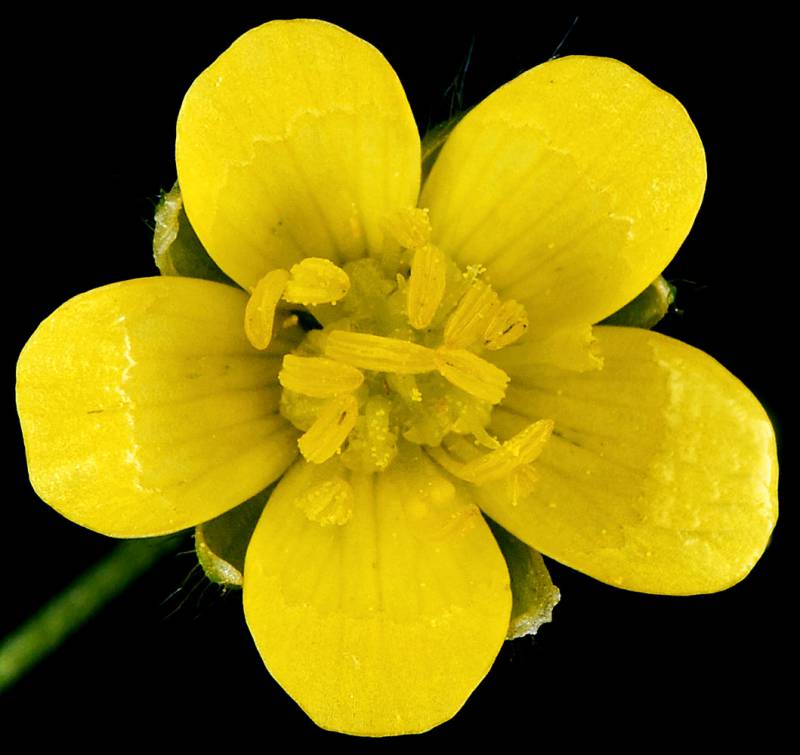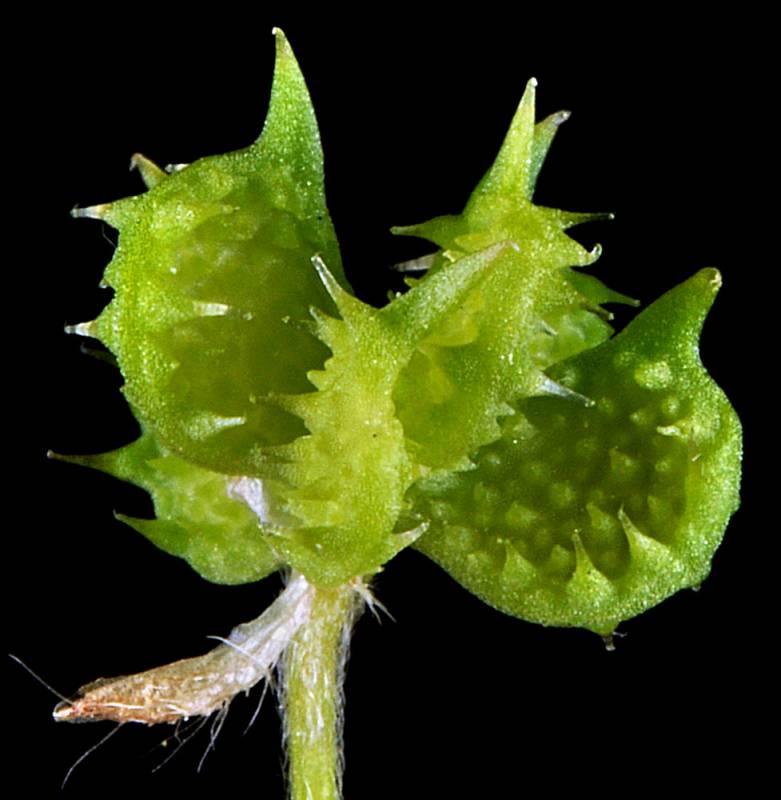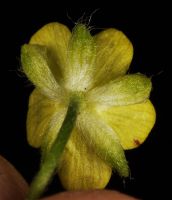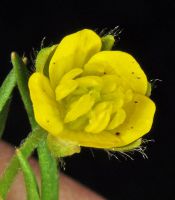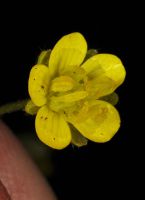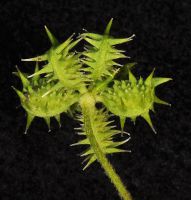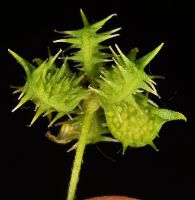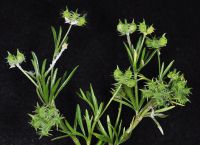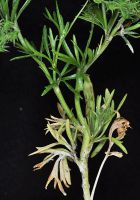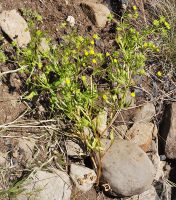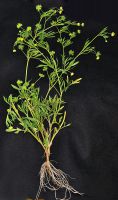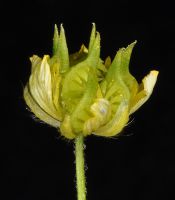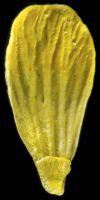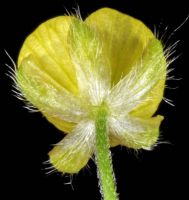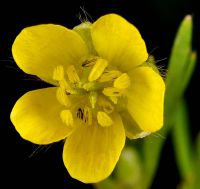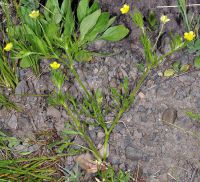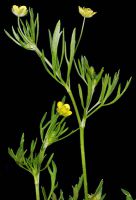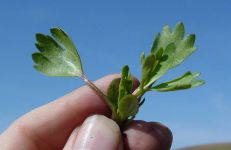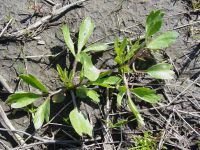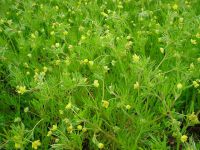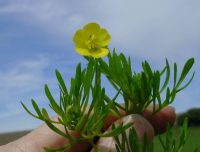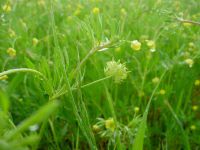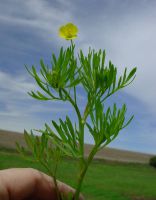Distribution: Occurring east of the Cascades crest in Washington; British Columbia to California, east to Idaho and Utah; also in areas of central and eastern U.S.
Habitat: Dry woodlands and waste ground.
Flowers: May-June
Origin: Introduced from Europe
Growth Duration: Annual
Conservation Status: Not of concern
Pollination: Bees, flies, butterflies, beetles
Stiff-hairy annual from thick fibrous roots, the stem single, sometimes rooting at the lower nodes, 1.5-4 dm. tall.
Basal leaves oblanceolate, 3-toothed to twice ternately divided into linear lobes; cauline leaves alternate, tri- or bi-ternately divided into linear segments.
Flowers solitary on slender pedicels 3-5 cm. long; sepals 5, spreading, membranous, yellowish, 3.5-6 mm. long, hairy; petals 5, yellow, 5-8 mm. long, obovate; receptacle hemispheric, hairy; nectary basal on and nearly as broad as the petal, free to the base; stamens about 10; pistils 5-8 in a globose cluster.
Achenes greatly compressed, nearly circular, with many spines; stylar beak stout, straight, 3 mm. long.
Publication: Sp. Pl. 1: 555. 1753.
PNW Herbaria: Specimen records of Ranunculus arvensis in the Consortium of Pacific Northwest Herbaria database.
WA Flora Checklist: Ranunculus arvensis checklist entry.
OregonFlora: Ranunculus arvensis information.
E-Flora BC: Ranunculus arvensis atlas page.
CalPhotos: Ranunculus arvensis photos.
USDA Plants: Ranunculus arvensis information.

